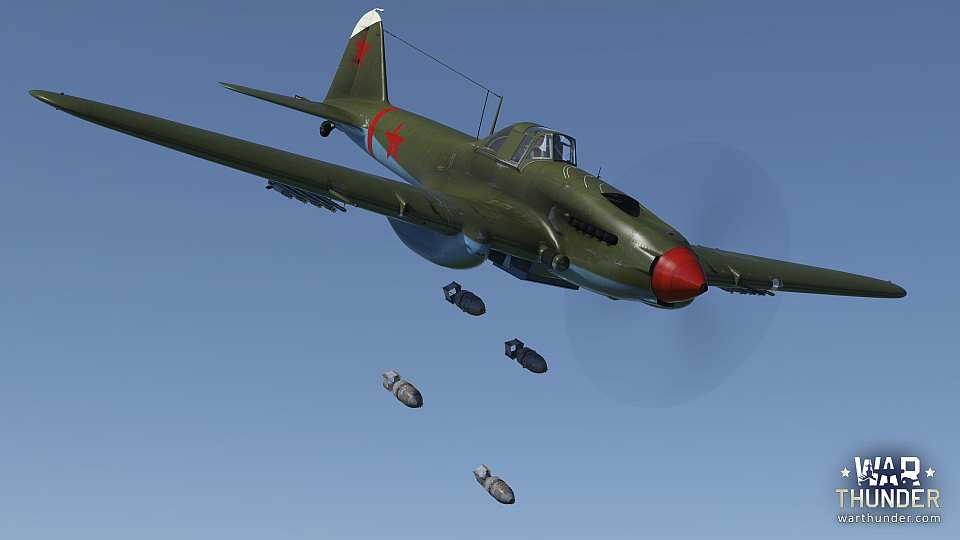War Thunder IL-2 1942
Source –
This aircraft will replace the current IL-2 at the second rank. The armament consists of fixed wing panels, which have two 23-mm VYa cannons with ammunition of 150 rounds each, and two 7.62-mm ShKAS machine guns with ammunition of 750 rounds per barrel. On the inner pylons it is possible to attach four bombs from 50 to 100 kg, in the two outer holders it is possible to attach bombs of the FAB-100 or FAB-250 type. Under the wing panels there are rails installed – which could mount PO-82 (four on each side) rockets.
Questo velivolo sostituirà l’attuale IL-2 al secondo tier. L’armamento è costituito da pannelli ad ala fissa, che hanno due cannoni Vya da 23 mm, con munizioni da 150 colpi ciascuno, e due mitragliatrici da 7,62 mm ShKAS con munizioni da 750 colpi per canna. Sui piloni interni è possibile agganciare quattro bombe da 50 a 100 kg, nei due supporti esterni è possibile agganciare bombe del tipo FAB-100 o FAB-250. Sotto le semi-ali ci sono binari che potrebbe montare razzi PO-82 (quattro su ciascun lato).
Kirill “Lassar” Vostretsov, game designer:
A logical continuation of the IL-2 of 1941 production. This model updates an existing single-seated version of IL-2 with 23 mm VYa-23 cannons and receives the correct payload with all its variety of bombs and rockets.
Una continuazione logica della produzione dell’IL-2 del 1941. Questo modello aggiorna una versione esistente a singolo pilota con cannoni da 23 millimetri Vya-23 e riceve il carico corretto con tutta la sua varietà di bombe e missili.
Yuri Titarev, artist:
The interesting feature of this aircraft are its fairings, which are positioned on the wings and cover the mechanical parts of the VYa-23 cannons and an anti dust filter, which is located on the right wing of the aircraft. Fairings with apparent simplicity have a rather complex form, which took quite a lot of time to work out and the dust filter itself has a rather complex conjugation with the wing, creation of smoothness in connection between these units was a challenge.
La caratteristica interessante di questo aereo sono le sue carenature, che sono posizionate sulle ali e coprono le parti meccaniche dei cannoni Vya-23 e un filtro antipolvere, che si trova sulla destra del velivolo. Le carene pur apparentemente semplici hanno una forma piuttosto complessa e hanno preso un bel po ‘di tempo per essere modellate e il filtro ha una congiunzione piuttosto complessa con l’ala, ricreare questo collegamento tra questi due pezzi è stata una sfida.




